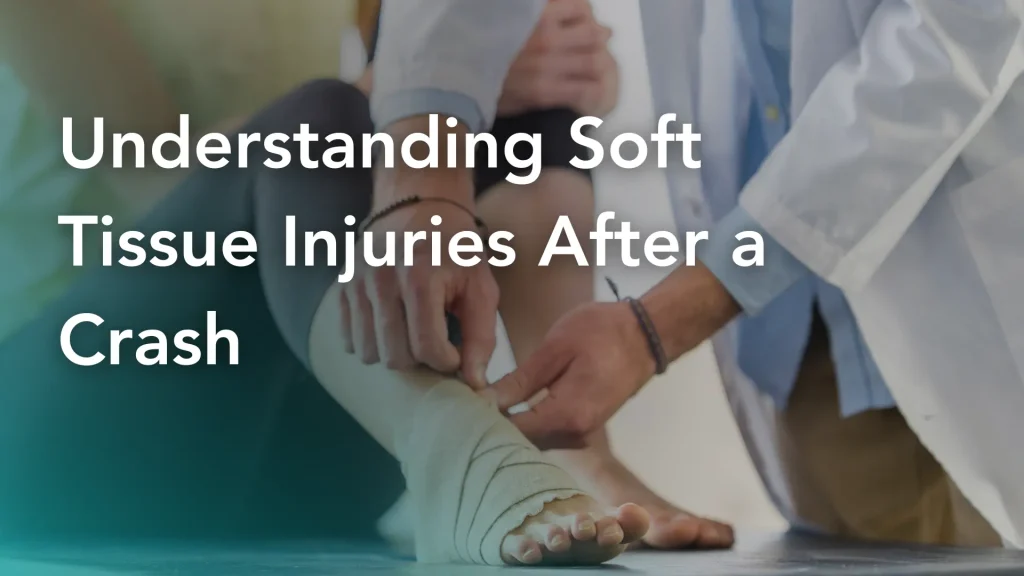May 01, 2025

While not always as dramatic as a broken bone or brain injury, soft tissue injuries after an accident can have serious long-term effects. Making it essential to include them in your accident report to support your claim and recovery. An Indiana car accident lawyer can help document your injuries after a crash, including often-overlooked soft tissue injuries, and guide you through the process to recover fair compensation.
What Are Soft Tissue Injuries?
The body’s soft tissues include the muscles, tendons, ligaments, and connective tissues that support movement and coordination. Therefore, soft tissue injuries occur when these parts are stretched, torn, or damaged, which helps explain why it’s hard to get compensated for your soft tissue injury, since the damage isn’t always visible on scans or immediately apparent.
Common causes of car accidents often cause this type of injury due to the crash’s sudden force or the victims’ bodies twisting. These injuries can be painful and limit your ability to move or perform daily tasks. You might experience swelling, stiffness, bruising, or muscle spasms in the short term. Some people also develop headaches, fatigue, or difficulty sleeping.
While many soft tissue injuries heal with rest and therapy, others can cause long-term pain or reduced mobility. Symptoms can linger or even get worse over time without proper treatment. That’s why it’s crucial to see a doctor and follow their advice after any crash, even if you initially feel okay.
Please read more about the bills covered from the accident here: How Medical Bills Are Paid After a Car Accident in Indiana.
Common Soft Tissue Injuries After an Accident
Common soft tissue injuries from Indiana car accidents include:
- Whiplash – A result of the neck’s violent back-and-forth motion in a collision, whiplash can damage muscles, ligaments, and tendons. It often leads to neck pain, stiffness, headaches, and limited mobility.
- Muscle Strains – A strain occurs when a muscle stretches or tears in a crash. These injuries can occur in the neck, shoulders, back, or legs depending on the body’s movement during the accident.
- Ligament Sprains – Sprains involve overstretched or torn ligaments, which connect bones at joints. Ligaments in the ankles, knees, and wrists commonly suffer injuries in car accidents.
- Contusions (Bruises) – A direct blow in a crash can crush muscle fibers and connective tissues without breaking the skin. Deep bruises may cause swelling, pain, and limited motion.
- Tendon Injuries – Tendons attach muscles to bones. The sudden force of an accident can cause inflammation (tendinitis) or even tears, particularly in the shoulders or arms.
- Back and Spine Soft Tissue Damage – Even without a broken bone, muscles and connective tissues in the back can be strained or torn in a collision. These injuries may affect victims’ posture, movement, and daily function.
- Myofascial Pain Syndrome – This condition results from muscle overuse or trauma and causes ongoing pain in sensitive muscle areas called trigger points.
How to Document Soft Tissue Injuries for a Claim
 Soft tissue injuries after an accident often don’t involve visible symptoms like other ailments. You need robust evidence to prove your injuries and their effects on your life. Some evidence you can use to document soft tissue injuries includes:
Soft tissue injuries after an accident often don’t involve visible symptoms like other ailments. You need robust evidence to prove your injuries and their effects on your life. Some evidence you can use to document soft tissue injuries includes:
- Medical Records – These include your doctor’s notes, exam results, diagnoses, and treatment plans. They show the injury is real and help connect it to the crash.
- Diagnostic Imaging – While soft tissue injuries don’t always show on X-rays, MRIs and ultrasounds can reveal damage to muscles, tendons, and ligaments.
- Photographs – Take clear photos of bruises, swelling, and any visible effects from the crash. Keep taking pictures over time to show how the injury develops or lingers.
- Pain Journal – Write down your daily symptoms, pain levels, and how the injury affects your activities. This record helps show the injury’s impact on your life, particularly its effects on your quality of life.
- Receipts and Bills – Keep copies of all your medical expenses, including prescriptions, physical therapy, and assistive devices like braces or heating pads. These documents can help illustrate the financial cost of your injury.
- Work Records – Provide notes from your employer showing any work you miss, reduced hours, or changes to your duties resulting from the injury.
- Witness Statements – Friends, family, or coworkers can describe how the injury affects your daily routine or physical abilities.
- Expert Opinions – A medical expert can offer a detailed analysis of your condition, including how it may affect you long-term.
How Custy Law Firm | Accident & Injury Lawyers Can Help You Seek Compensation for Soft Tissue Injuries
At Custy Law Firm | Accident & Injury Lawyers, we know soft tissue injuries are real and can have long-lasting effects on your life. We can help you seek fair compensation through a personal injury claim or lawsuit. Our Indiana car accident lawyers will start by investigating the crash to identify who caused the crash. Next, we’ll collect your medical records, expert testimony, and other evidence to prove your injuries and their effects.
Once we complete our investigation, we’ll begin settlement negotiations with whoever caused the crash (or their insurance company). We’ll fight any efforts to downplay your injuries or reduce your compensation. We’ll also prepare your case for trial should settlement negotiations fail.
Our team is here to help you understand your rights and take the first step toward securing the necessary benefits—trust Custy Law Firm | Accident & Injury Lawyers to protect your future after an Indiana car crash. Call (219) 286-7361 now or complete our contact form for a free case review.
Related Post
How Are Truck Accidents Different from Other Auto Accidents?










